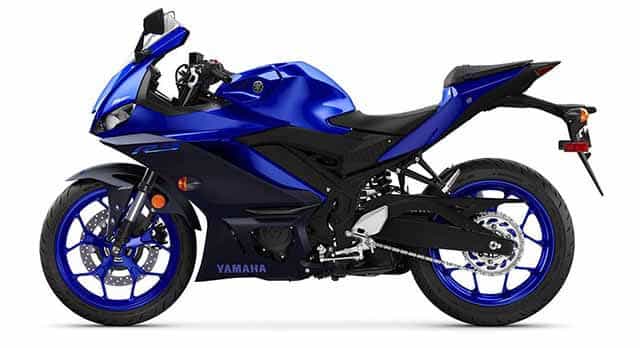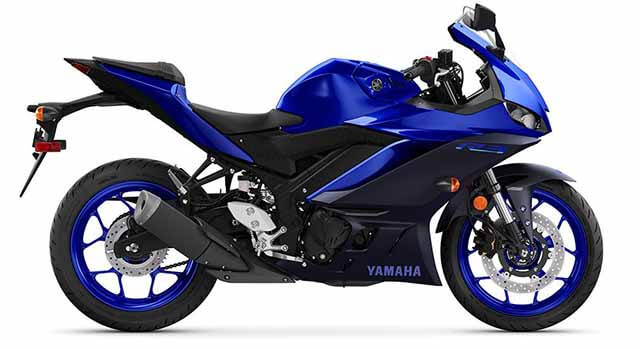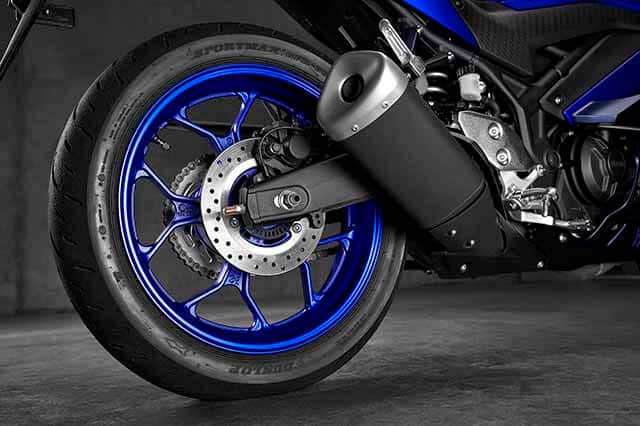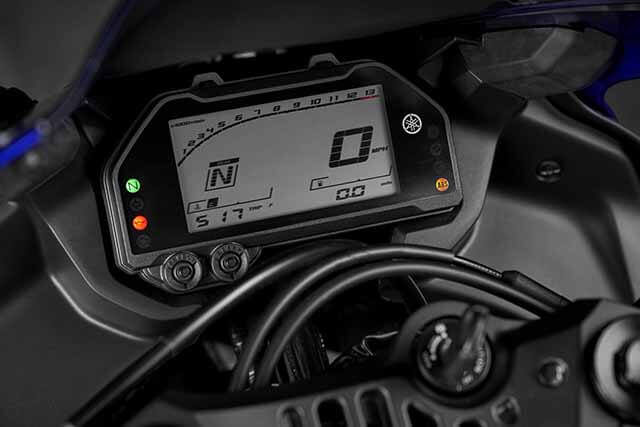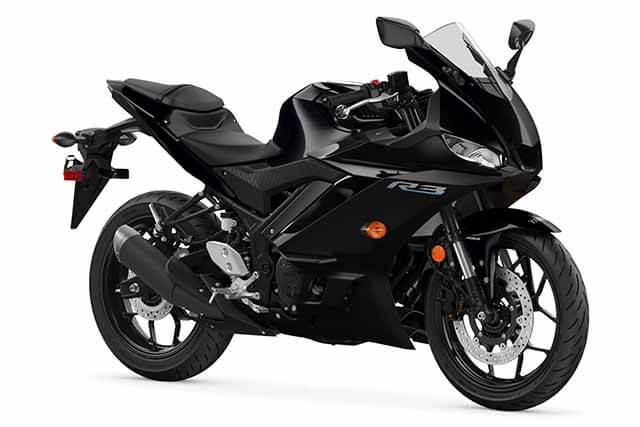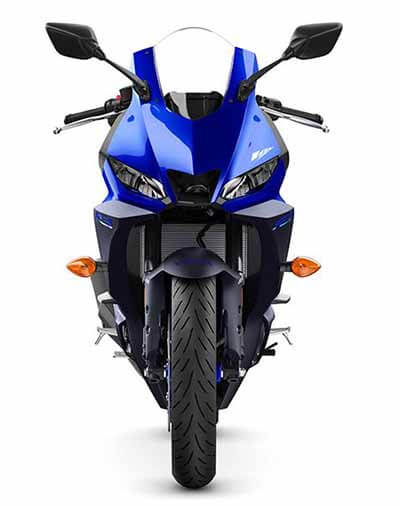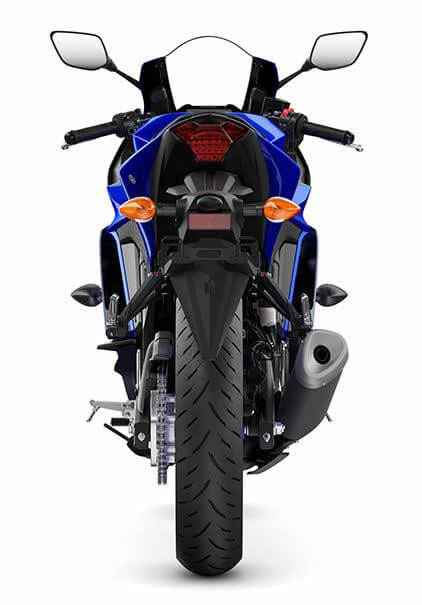Yamaha YZF-R3, also known as the R3, is a 321 cc (19.6 cu in) inline-twin sportbike that has been manufactured since 2015. The R3 and R25 are Yamaha’s first twins with offset cylinders.
This lightweight SuperSport gets a new MotoGP-inspired design, elevating it to the rank of the most innovative 300 on the street or track. Its sleek new bodywork was inspired by Rossi’s race bike, and its aggressive new dual LED headlights emphasize its pure R-series DNA.
Is it worth buying a Yamaha RZF-R3?
If someone wants to enjoy a smooth, fantastic engine and balance, the Yamaha R3 is the perfect option. Its price is $52,99.
The R3 is worth buying as it balances out the amount one spends on it through its various valuable features. That is the reason R3 with a price of $52999 is worth buying as it is a breeze to ride. It has a smooth, useful engine, and the riding posture makes it very relaxed all day.
It’s also smart in city traffic, with its compact, nimble frame perfect for weaving between vehicles.
Key features:
-
Sleek R-Series Design
The YZF-R3® is a lightweight, polished, and aerodynamic motorcycle with fluid bodywork and ergonomics inspired by the MotoGP® YZR-M1® and new graphics and colors.
-
High-Performance Supersport Engine
Yamaha’s championship-winning technology provides the YZF-R3 with a wide range of power and thrilling high-rpm output.
-
Advancement in Suspension
The inverted fork on the R3 operates in tandem with a Monocross® rear shock to provide excellent steering, almost 50/50 weight distribution, and damping and spring settings designed for a variety of road conditions, all while maintaining a controlled frame.
-
Minimalist Chassis
With a fully-fueled weight starting at just 375 pounds and a seat height of 30.7 inches, the YZF-R3 is ultra-light, nimble, and confident on everything from narrow city streets to wide-open racetracks.
-
Effectiveness in Practice
The YZF-R3 mixes Yamaha’s legendary sophistication and dependability with exciting performance, all while staying affordable, thanks to a suite of unique technologies.
How fast is the Yamaha YZF-R3? Outstanding features of Engine?
-
Twin-Cylinder Power: The power station
Yamaha’s 321cc liquid-cooled inline 2-cylinder engine delivers excellent power and output through the entire rpm range. Because of the 180-degree crank configuration and optimized counterbalance, the design reduces vibrations for a smooth, polished engine character.
-
Transmission of six speeds
A six-speed gearbox with smooth changes ensures the rider maintains the proper ratio when navigating tight canyon turns or racetrack straightaways.
-
The architecture of a High-Revving Engine
With a compression ratio of 11.2:1, double-overhead cams (DOHC), and four-valve cylinder heads, the YZF-R3 engine is optimized for high-rpm performance and quick-revving energy, providing a thrilling ride with a wide range of power.
-
Pistons that are both powerful and light.
Forged aluminum pistons, which are used on the YZF-R1®, result in lighter-weight and superior performance at increased temperatures, ensuring dependability at higher rpm.
Specification of the engine (DOHC inline twin-cylinder engine with four valves per cylinder)
How good is the Yamaha YZF-R3 Chassis?
| Form of Engine: | 321cc liquid-cooled four-stroke |
| The ratio of Compression: | 11: 2: 1 |
| Bore * Stroke: | 44.1mm x 68.0mm |
| Fuel Supply type: | Injection |
| The process of transmission: | 6-speed transmission with a multi-plate wet clutch |
| Final Push: | The chain |
The goodness of the chassis of the Yamaha YZF-R3 can be estimated through the following most important points.
-
ABS has powerful braking.
A 298mm floating-mount front disc brake is complemented by a 220mm rear disc, and an antilock braking system increases rider faith while avoiding wheel lock-ups in low-traction situations.
-
Balanced to perfection.
The YZF-R3 has a near 50/50 front/rear weight distribution due to engine positioning and overall machine dimensions, which improves performance, particularly in dynamic canyon-carving or racetrack riding environments.
-
Forward Fork Inverted
The YZF-R3 has an inverted fork with better spring and damping settings, which improves fork rigidity, front-end feedback, and control feel dramatic. A top clamp inspired by the YZR-M1 is also included in the specification for a more aggressive supersport look.
-
Rear Monocross Shock
The single-shock platform centralizes mass even further and is optimized to strike a compromise between travel convenience and sporty efficiency for versatility through a wide variety of applications, including metropolitan cycling to track days. It can also be adjusted to carry passengers or cargo by modifying the spring preload.
-
LED Lighting
In both the taillight assembly and the headlights, light-emitting diode (LED) components are used. LEDs not only provide long life and low power consumption, but they also have excellent lighting for morale and illumination both day and night.
Chassis Features:
| Front suspension: | 5.1-in travel |
| Rear suspension: | 4.9- in travel |
| Front-tire: | 110/70-17 |
| Back-tire: | 140/70-17 |
| Front brake: | ABS hydraulic disc 298mm |
| Rare brake: | ABS hydraulic disc 220mm |
Dimensions:
| Height of seat: | 30.7 inch/ 779.78 mm |
| Length *width * Height (inches): | 82.3 x 28.7 x 44.9 |
| The base of a wheel (inches): | 54.3 |
| Caster angle: | 25 |
| Clearance from the ground: | 6.3 inches/ 160mm |
| Wet weight: | 375 pounds |
| Trail: | 3.7 inches/ 94 mm |
| The capacity of fuel: | 3.7 Gallon/ 14 liters |
| Fuel economy: | 56mpg |
What is the price of the Yamaha YZF-R3?
$5,299 – Team Yamaha Blue
$5,299 – Midnight Black
About the author: Michael Parrotte was the Vice President of AGV Helmets America, and a consultant for KBC Helmets, Vemar Helmets, Suomy Helmets, Marushin Helmets, KYT Helmets, Sparx Helmets. In addition, he is the founder and owner of AGV Sports Group.
M/Z

